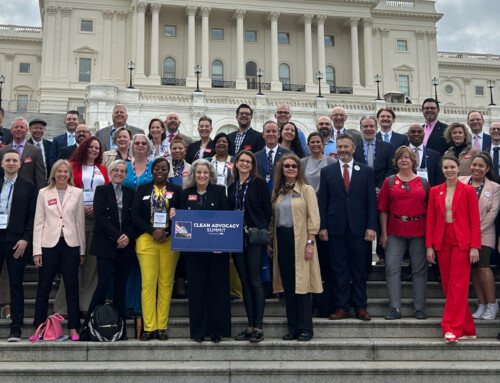California Revises VOC Regulations
On Monday, August 1, 2022, California finalized its amendments to its Regulations for Reducing VOC Emissions from Consumer Products that were approved by the California Air Resources Board (CARB) back in March 2021. The revisions, which became effective August 1, 2022, impose lower VOC limits on a number of product categories, sunset the 2% exemption for fragrances, prohibit the sale of certain products containing listed toxic substances, and modifies Test Method 310. In general, these revisions must be complied with by Jan. 1, 2023, unless otherwise noted. Below is a summary of those revisions that are most relevant to the cleaning industry.
Background. CARB regulates the volatile organic compound (VOC) content of numerous cleaning and other household and commercial products to reduce the formation of ozone and smog in the lower atmosphere under a set of regulations formerly known as the Regulation for Reducing Emissions from Consumer Products (commonly referred to as the General Consumer Products Regulations). Periodically, CARB revises these regulations to ensure that the air quality level within the state is in compliance with the mandatory ozone levels.
Air Fresheners. One of the major revisions to the California General Consumer Products Regulations is the transition of the current regulated air freshener categories of “Single Phase Aerosol Air Freshener” and “Double Phase Aerosol Air Freshener” to “Manual Aerosol Air Freshener” and “Automatic Aerosol Air Freshener.” The revised VOC limits for air fresheners are set forth below.
|
Product Category |
Jan. 1, 2023 (% by weight) |
Jan. 1 2027 (% by weight) |
|
Automatic Aerosol Air Freshener |
30% |
|
|
Manual Aerosol Air Freshener |
10% |
5% |
|
Concentrated Aerosol Air Freshener |
15% |
10% |
|
Total Release Aerosol Air Freshener |
25% |
Insecticides. The final rule lowers the VOC content limit for Crawling Bug Insecticides (aerosol) from 15 percent to 8 percent by weight as of January 1, 2030. Due to technical feasibility challenges, a separate “Bed Bug Insecticide” category has been added that retains a 15 percent by weight VOC standard for the aerosol product form, and a 20 percent by weight VOC limit for all other forms of the product.
Two Percent Fragrance Exemption to Sunset. Of particular significance, the final rule sunsets the Two Percent Fragrance Exemption effective Dec. 31, 2030, for the purpose of achieving needed VOC reductions and facilitating program enforcement. The exemption would be retained for a portion of the fragrance and monoterpene content of “Air Freshener,” “Disinfectant,” “Sanitizer,” non-aerosol “General Purpose Cleaner,” and non-aerosol “General Purpose Degreaser” products due to potential technical feasibility challenges of complying without any exemption in these product categories.
Prohibition of the Sale of Certain Products Containing Certain Toxic Substances. The final rule also extends the prohibition on the use of perchloroethylene, trichloroethylene, methylene chloride, and pchloro-α,α,α-trifluorotoluene (PCBTF) to certain air freshener product categories along with “Crawling Bug Insecticide (Aerosol) products.” This requirement is intended to ensure that compliance with proposed VOC standards is achieved in a manner that protects public health.
|
Product Categories |
Eff. Date |
Sell-Thru |
|
Manual Aerosol Air Freshener |
1/1/23 |
1/1/26 |
|
Concentrated Aerosol Air Freshener |
1/1/23 |
1/1/26 |
|
Total Release Air Freshener |
1/1/23 |
1/1/26 |
|
Crawling Bug Insecticide |
1/1/30 |
1/1/33 |
Test Method 310. Lastly, the final rule makes certain revisions to Test Method 310 to improve clarity and consistency, remove and add several reference test methods, and revise equations to better reflect how CARB staff calculates VOC and ROC. Amendments to Method 310 added a statement clarifying that volatile non-VOCs are not counted toward the VOC content of a product. In addition, amendments to Method 310 clarify when CARB takes enforcement action after VOC results have been determined.
Additional Information. The complete text of the revisions to the California General Consumer Products Regulation is available here.

















